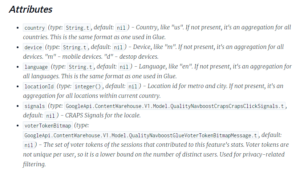Google Analytics is an essential tool for any marketer. If you run any kind of online business, or you have a website of any kind, signing up for a Google Analytics account should be high on your list of priorities.
This free analytics tool shows you exactly what is happening on your website. While it’s impossible to guess how many people are visiting your site, where they come from and how they behave when they are there, Google Analytics provides you with the exact figures you need to know.
As well as finding out about the behaviour of your visitors, you can use the data to help you to find new customers. Here are some of the main ways you can do this.
1. Find Out Where Your Visitors Are Coming From
Google Analytics provides a number of different reports that give you insight into exactly what’s going on behind the scenes of your website. One of the most important of these is the Customer Acquisition Report. Using this report, you can find out where your website traffic is coming from.
To find the report, go to ‘Acquisition’. Here you can see a lot of information about your sources of traffic, divided into organic search, direct traffic, social and referral traffic. This information shows you how your visitors are finding your website.
Without such information, you might assume that the majority of your visitors come from a particular channel like search. But the report might show you that actually social is your biggest source of traffic.
How can you use this information to find new customers?
By doubling down on your most important traffic source. If you are getting most of your visitors from organic search, you know that your SEO strategy is working. Now you need to put more effort into your SEO to drive even more traffic.
2. Discover Who Is Using Your Website
You can also get a clear idea about the type of person who is visiting your site and buying your products and services using Google Analytics with the Audience Overview Report.
Just click on ‘Audience’ followed by ‘Overview’ to bring up the report. You can immediately use this to see which visitors to your website are new and which are returning. You can also find out the number of users, sessions, page views, average duration of each session, bounce rate and more.
Using this report, you can also find out which country and even city visitors are coming from, as well as the browsers and operating systems they are using.
This is all great information to have. Now you know who is actually interested in your service, rather than who you think is interested. Once you know where your traffic is coming from and the browsers your visitors use to visit your site, you can use this to improve your marketing efforts.
For example, if you run advertisements on social networks or search, you can now fine-tune your ads to target specific audiences because you know that these people are the ones you should be targeting.
3. Find Out What Visitors Are Searching For
If you have a search bar on your website, you have another useful tool in Google Analytics that can help you to find more customers.
Search bars are always useful to have on your site, and they are especially useful for e-commerce sites where they can help to boost conversions. Often, people will visit your website wanting to know about a specific product or service. If you make it easier for them to find what they are looking for, there’s a good chance you will make more sales.
To find the Internal Search Report, go to ‘Behaviour’, then ‘Site Search’ and ‘Overview’. Now, you can see all the unique searches that were made in the search box, as well as the most frequent queries that visitors to your site made.
This is useful information for finding new customers. With this information, you know what the most popular searches are for. You can then take this information and use it in your advertising or other marketing channels.
If you know what people are looking for on your website, you can use this to target new customers. For example, you could create content around the types of products that are most searched for on your site because you know that your audience is interested in these topics. You could then advertise your new content and target your ads to lookalike audiences on Facebook.
This should help you to reach out to potential customers who will be interested in the same products and service that your existing site visitors are looking for.
4. Learn Which Content Is Performing Best
This is a useful report for fine-tuning your content strategy and driving more potential customers to your website. It can help you spend more time creating content that people are interested in reading and less time creating content that no one cares about.
Click on ‘Behavior’, then click on ‘Site Content’ and ‘All Pages’. Here you will see a dashboard that provides information on your website’s content. You can see the page views, the time spent on each page and the bounce rates.
This provides you with an excellent overview of how successful each piece of content really is. You may have a few blog posts that are generating a huge amount of interest, and others that you thought were doing well but which are actually largely ignored by your visitors.
Now you know what your most popular pages are, you will have a good idea about which pages you should be marketing. If you run ads, you could send targeted visitors to these particular pages because you know that they are the most effective, helping to get more leads and sales – rather than spending money sending targets to content that they are not interested in.
You can also use your most effective blogs to improve your lead generation. For example, you could create content upgrades for your best blogs to get more conversions from them. Then you can spend more of your advertising budget on sending traffic to that blog from Facebook or another social site.
You can also use this information to direct your content strategy. Now you know which type of content is the most effective, you can create more content that people actually want to read, boosting your SEO and generating more visitors.
5. Track How Visitors Use Your Site
Another thing you can do to maximise your use of Google Analytics is to set up specific goals. Click ‘Conversions’, ‘Goals’, ‘Overview’ and ‘Set up goals’, and you will find various options here.
For example, you could target cart abandons for your e-commerce store. It’s annoying when visitors abandon their carts, but they are still good targets for making a sale. You can use the information you find in Google Analytics to retarget them, send them emails or use their email addresses to target people like them on social media.
You could also follow the same process as above to set up new goals. This could be for customers who fill out a form or who download your lead magnet, for example. When you set up goals for specific actions, you can see the path that visitors take before they convert, such as how they land on your site and how they progress through it.
This is all valuable data that you can use to optimise your processes and focus on those areas that lead to the most conversions.
Find More Customers Using Google Analytics
Google Analytics is a fantastic tool for any website owner. But don’t just use it to check how many people are landing on your website. Take the data you find and use it to optimise your processes to find more customers so you can grow your business. Alternatively, if you find yourself struggling for time, we have a range of services available so you can relax knowing you’re in safe and knowledgeable hands.



